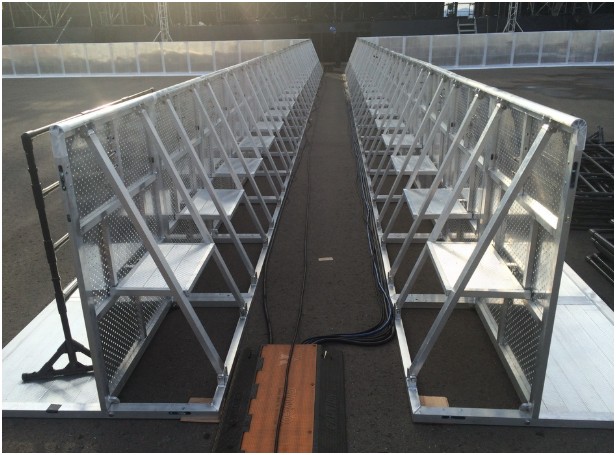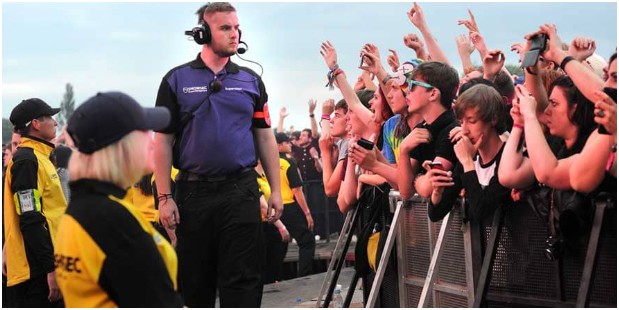I never thought I’d have a professional revelation while stuck in a portable restroom—but life has a funny sense of humor.
The incident occurred at a crowded music festival. I’d ducked into one of those neon-blue booths just before the headline act. When I emerged, I was met with a sea of people, completely blocking the designated walkway. No signage. No staff & No plan. Just sweaty confusion. It took me 18 minutes to move 30 feet.
That chaotic scene made one thing very clear: the best crowd management isn’t just about control—it’s about care.
And whether you’re managing a stadium, street protest, or state fair, how you handle a crowd could be the difference between smooth sailing and a liability nightmare.
Why Does the Best Crowd Management Even Matter?

Let’s be real: crowds aren’t just large groups of people—they’re potential flashpoints. When movement stalls or panic spreads, things escalate fast. I’ve seen it all in my years working with public safety regulators—stampedes at parades, bottlenecks at emergency exits, and even lawsuits over poorly managed holiday mall events.
The best crowd management prevents that. It’s not about herding people like cattle; it’s about guiding them intuitively, legally, and safely. Done right, it ensures:
- People move with ease (and without stress)
- Emergency services can access any point quickly
- Liability risks drop dramatically
- Everyone, including staff, feels secure and respected
And yes, it also means I’m less likely to be trapped near a port-a-potty again.
What Are the Legal Risks of Poor Crowd Management?

Let’s put on our liability glasses for a second. When a crowd incident occurs, courts don’t just ask what happened—they ask who failed to plan. If you’re the event organizer or venue manager, the spotlight is on you.
Common legal risks include:
- Negligence claims: If someone is hurt due to overcrowding or poor signage, you may be held liable.
- Violations of local codes: Many jurisdictions have specific rules regarding crowd control, ingress and egress, and emergency pathways.
- ADA non-compliance: If your crowd setup prevents accessible movement for individuals with disabilities, prepare for potential issues.
That’s why the best crowd management starts with a clear, compliant plan and a deep respect for people’s rights.
What Strategies Define the Best Crowd Management?

Okay, here’s where things get juicy. The most effective strategies are rooted in planning, communication, and adaptability. Here are three I swear by:
Zoning and Flow Mapping
Divide your space into zones—entrances, viewing areas, restrooms, and food vendors—and ensure there is a clear flow between them. Use visible signage and barriers to guide movement naturally.
Crowd Density Monitoring
Use cameras, clickers, or even AI-based tools to track how dense each area gets. When one zone nears capacity, redirect or pause entry to the zone.
Trained Human Presence
I’m talking about more than just security. Friendly, clearly identified crowd stewards can de-escalate tension, offer directions, and become the human face of your event’s safety plan.
If you’re looking for a one-size-fits-all tool, sorry—it doesn’t exist. But mix these tactics thoughtfully, and you’ll hit the sweet spot.
How to Make the Most of the Best Crowd Management

Ready to level up? Here’s how I approach crowd management from the outset, whether for a small-town fair or a major sports event.
Start with a site-specific assessment. Walk through the space as if you were a first-time visitor. What feels confusing? Where might people congregate or become disoriented?
Then, layer in legal compliance. Check your local fire codes, noise ordinances, accessibility laws, and emergency services protocols to ensure compliance.
This is where a legal review upfront saves headaches later. Next, map out your crowd communication plan. Clear signage, live updates on event apps, and trained personnel with radios can all help minimize chaos.
Finally, build in flexibility. If a gate gets backed up, what’s your Plan B? Great crowd management means thinking three steps ahead.
FAQ: Let’s Break Down Your Crowd Questions
What’s the safest crowd density?
It depends on the activity. For standing crowds, aim for no more than 2-3 people per square meter. Anything over 5 is asking for trouble—both physically and legally.
Do I need permits for crowd control measures, such as barriers or road closures?
Most likely, yes. Always check with your city or municipality. Failure to obtain proper clearance can void insurance coverage and result in fines.
Can I use volunteers for crowd management roles?
Sure—but train them like pros. Volunteers should be familiar with evacuation plans, emergency contacts, and techniques for managing stress. A name badge isn’t enough.
What if something goes wrong anyway?
Document everything. From pre-event risk assessments to post-event incident logs, a clear paper trail shows you took reasonable precautions. Courts (and insurers) like that.
Crowd Control Toolbox: Comparing Methods
Here’s a handy look at different methods for managing crowds and when they shine:
| Method | Best Use Case | Legal Consideration |
| Metal Barriers | Parades, queues, concert pits | Must not block ADA pathways |
| Wayfinding Signage | Large venues, fairs, malls | Should be multilingual if necessary |
| Stewards/Security | Protests, sporting events, nightclubs | Must be trained and licensed |
| Drone Monitoring | Festivals, rallies, large outdoor spaces | Airspace laws may apply |
| Mobile Apps | Conferences, expos, multi-location events | Ensure data privacy compliance |
Don’t Be That Event—Get Your Crowd Game Tight
Here’s the deal: the best crowd management isn’t about keeping people in line—it’s about treating them like guests, not liabilities.
Crowds are living organisms. They breathe, shift, swell, and react. If you respect that, you won’t just keep things safe—you’ll create a better experience for everyone involved.
So the next time you’re planning an event, picture me—your friendly legal contributor—stuck behind a port-a-potty. And then ask yourself: Would this happen if my crowd management was up to par?
Probably not.
Plan better. Stay safer. And hey—keep the exits clear.



